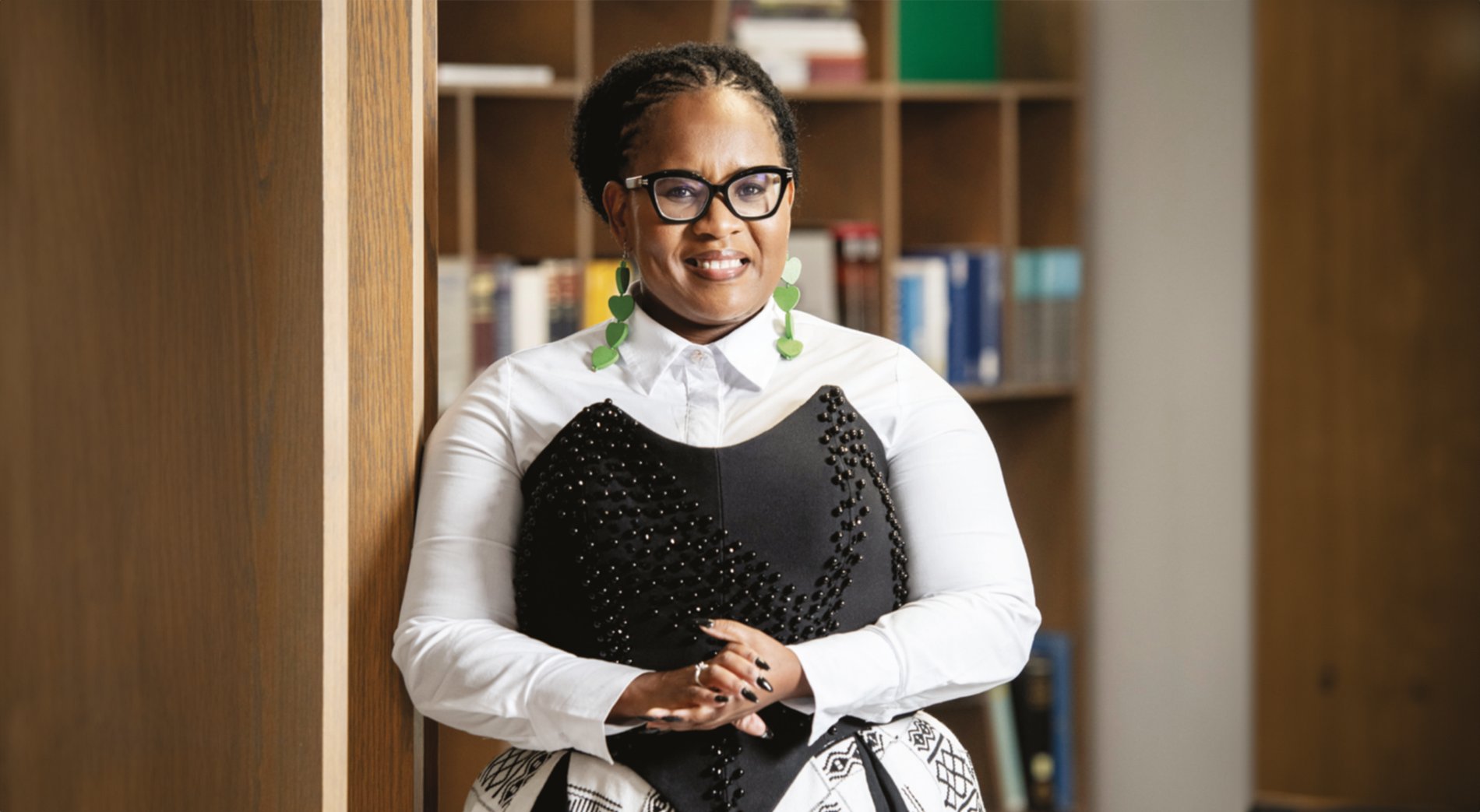Creating a more equal future means understanding how pernicious old stereotypes continue to distort how black women are perceived at work.
“My workplace is committed to achieving their targets for promoting and retaining women. They have hit almost all their targets, but black women have not benefited, and I have felt invisible throughout this process.”
In the aftermath of the death of George Floyd, the issues of racial equity and equality have been to the fore in many organizations – and not only in the US. Amid wide-ranging and far-reaching discussions about the limits of society’s progress on racial equality, organizations have instigated specific discussions on how to support black women, who must navigate the intersection of gender and race.
However, almost three years on, the reality is that organizations are still not making the progress they should. The words spoken to me during my research into black leaders’ experiences at work reflected a sentiment that I heard repeatedly from black women. Organizations are increasingly telling a positive story about their successes on diversity, equity and inclusion (DEI). But black women do not feel they have benefited. In the meantime, they feel sidelined and invisible.
Those views chime with recent studies by McKinsey and LeanIn in the US, and by the Black Women in Leadership Network in the UK (see leanin.org and bwilnetwork.org). They show that whilst women are having worse experiences in the workplace than men, women of color are having a worse experience than white women – and black women are having the worst experience of all. Black women continue to fall well behind their white female counterparts when it comes to promotion to leadership positions.
My research for my book, The Model Black, suggests that this lack of progress is in part because of the durability of three racial tropes – that is, recurrent and longstanding themes in how black women are portrayed, which distort how black women are perceived in organizations today. It is critical to understand the warping influence of these tropes – and what organizations can do to improve the experience of black women.
The black female as obedient carer
“I come into the room, and I can see what’s happening. There are drinks laid out, and nobody has as yet served the coffee. There are white women there as well. I decided privately that I was not going to go and pour the drinks. Then the director asks me, ‘Would you mind…?’”
One of the most common tropes about black women may have its roots in the trope of the “mammy,” as American writer Patricia Hill Collins has explained. It emanates from the period of slavery when black women were taken away from their own families to nurture and care for white families. The notion of the black woman as nurturing, motherly and self-sacrificing still plays a role in the way black female leaders are perceived in the workplace today. Like many other images from slavery, the image of the mammy represents a controlling ideology. It is about keeping black women in their place.
Today, we see black women often expected to carry out the helper role. It becomes difficult to see them as being as well-skilled as white counterparts, or as possessing equal leadership potential. One interviewee told me about their experiences: “In our firm, I notice that the black female trainees are always expected to do the ‘grunt work.’ They are not asked to do the more creative strategic thinking often offered to their white counterparts, rather the tasks that require their narrower legal skills.”
This perception can mean that when a black woman steps outside of this role and is more assertive, the change in behavior is difficult for others to tolerate. She is perceived as aggressive. When she decides not to take on the role of the mammy, she instead becomes the ‘angry black woman.’
The angry black woman
A black leader told me how she could never assert herself without being criticized, whereas the same or even more forceful behavior was accepted in their white female colleagues: “There was a white woman, a managing director of one of the regions. She was swearing, effing and blinding, telling all sorts. A black woman would never keep her job if that happened.”
In another instance I was given an example of how a black woman has to weigh up the risk of being labelled as angry when confronted by a white person’s anger. Julie told me about a virtual encounter with her chief executive. Each week the managing directors would meet the chief executive to report on the week’s activities. It was typically a challenging environment, where the CEO would seek to understand some of the detail of the business. “No word of a lie, Barbara,” Julie shared, “he started shouting at me – shouting on a conference call! He started shouting at me down the line. I’m sitting there, in front of all my colleagues, and I’m really angry, but I thought, okay. I’m with my peers; I’m the only black person, I’m the only female. Do I argue and play to what they would expect, or do I hold back?”
The angry black woman is a figure described by the writer Bettina Judd as “hands on hips, rolling eyes, wagging finger”. It has its origins in 19th-century America, when white men dressed up as fat, angry black women. Later it became associated with Sapphire, a character on a US radio show. This became the image of the black woman that Americans saw and internalized – angry at everyone around her, at the government, at life in general. Sapphire is a person who wants to dominate. She is sensitive to injustice and likes to complain. She criticizes for the sake of criticizing, rather than to improve things.
This trope survives in broader society today, and consequently finds itself in the world of work, where it often trivializes legitimate complaints of injustice made by black women. Those I interviewed explained how when they asserted themselves and made complaints they were described as aggressive or angry, and consequently their grievances were dismissed.
The black female as sexually available
One black leader told me about an organization she had worked in where the white men had kept a book recording the sexual attractiveness of the women they worked with. Each kind of woman was given a score based on their desirability. Black women were given by far the highest ratings on account of their ‘exotic’ potential. Points were awarded to the men when they seduced any of the women in question. Black women in the organization were treated longingly by white men – and shown hostility by white women.
Another senior black leader told me how the men she met were “overly familiar” with her in a way they never were with white female colleagues. On one occasion, a client invited her to his home for a “cooking” session. He was persistent – she refused. Another US-based leader once told me how a white politician had come to speak at her company. At the time, this leader was eight months pregnant; the politician decided to rub his hand on her pregnant belly, uninvited. He wandered around the room, before coming back and rubbing her a second time. She could not imagine such overfamiliarity with her white female colleagues.
This is the trope of the black woman as sexually available. Patricia Hill-Collins talks about “the Jezebel”, the sexually aggressive black woman, as a controlling image in the oppression of blacks. Again, the image has its roots in slavery and provides a rationale that justified sexual assaults by white men on black women. Like the US ‘welfare mother,’ the trope of sexual availability is a socially-constructed weapon that has enabled the subordination of black women.
Beyond the tropes
The tropes outlined here matter for black female leaders and for organizations because, sitting at the intersection of gender and race, black women do not want to be called upon to fulfil a serving and nurturing role; they do not want to be denied the opportunity to speak up for fear of being labelled as aggressive or angry; and equally, they do not want to be objectified as sexual objects. Yet as black women experience all too often, these tropes continue to distort how they are perceived by others, and thus treated.
In light of these challenges, there are three key things organizations need to do.
1 Understand the black female experience
Focus on understanding the lived experience of black women in the organization. One black female leader told me how her consulting organization arranged for an external educator to facilitate a session around race, driven by a desire to understand black women in order to recruit and retain more black clients. The consultant expertly created a space where she felt safe to speak about her experience of the workplace. What she revealed during the session led colleagues to express shock and sadness. While this was a one-off event, she felt it had moved the needle – just a little – in relation to her colleagues’ understanding.
Such conversations have some value but they need to be a starting point to greater awareness and education, rather than an end in themselves. Further actions could include conferences and talks with experts, setting up information centers, and establishing reverse mentoring for senior leaders from black women. However, black women should not be expected to take on additional unrecognized – and unpaid – responsibilities to promote diversity, equity and inclusion.
Crucially, understanding the black female experience should not be seen as a series of one-off initiatives, but as a process of cultural change whereby perceptions of black women can be discussed, challenged and altered.
2 Raise awareness of the specific biases that affect black women
Placed at the intersection of race and gender discrimination, black women face the challenges relating to both, as highlighted by a recent McKinsey report which found that black women experience a wider range of microaggressions than women overall.
They are more likely to have their judgment questioned and be asked to provide additional evidence of their competence. They are also nearly two-and-a-half times more likely than white women – and more than three times more likely than men – to hear someone in their workplace express surprise about their language skills or other abilities.
The leaders I spoke to called for sensitive education on the specific microaggressions that affect black women. Reactions to the high-profile incident in the UK in late 2022 of an event at Buckingham Palace where a royal aide had touched the hair of a black charity worker and asked her repeatedly where she was “really from” underlines the continuing need for this type of education. A comment I repeatedly heard from black females was that they often felt unable to challenge such behavior, for fear that it might be perceived as an overreaction (the angry black woman trope). Organizations should ensure that any work on biases includes direct references to the history, development and impact of negative tropes on black women.
3 Introduce clear targets for black women in leadership roles
Many organizations have targets for women in senior leadership roles. They have helped focus efforts to deliver change, and women in leadership positions increased globally from 17% in 2004 to 32% in 2022, according to Grant Thornton. Organizations have dedicated significant resources to achieve this progress. Yet as McKinsey data from the US shows, women of color lag behind men and white women on every step of the corporate ladder, leaving them severely underrepresented at the executive level.
Many organizations still suffer from blind spots in relation to attracting, retaining and promoting black female talent. If organizations are serious about supporting black female talent, transparent and achievable targets are the way forward. And appropriate training, sponsorship and mentoring support need to be provided to ensure a level playing field.
As organizations focus on improving the position of women in the workplace, it is imperative they consider the specific needs of those who sit at the intersection of race and gender: black women. Racial tropes have proved stubbornly resilient down the years, but if organizations can improve understandings of black women’s experiences, raise awareness of the biases in play, and build a focus around targets for black women in leadership roles, they might finally help consign those pernicious old tropes to the history books.




